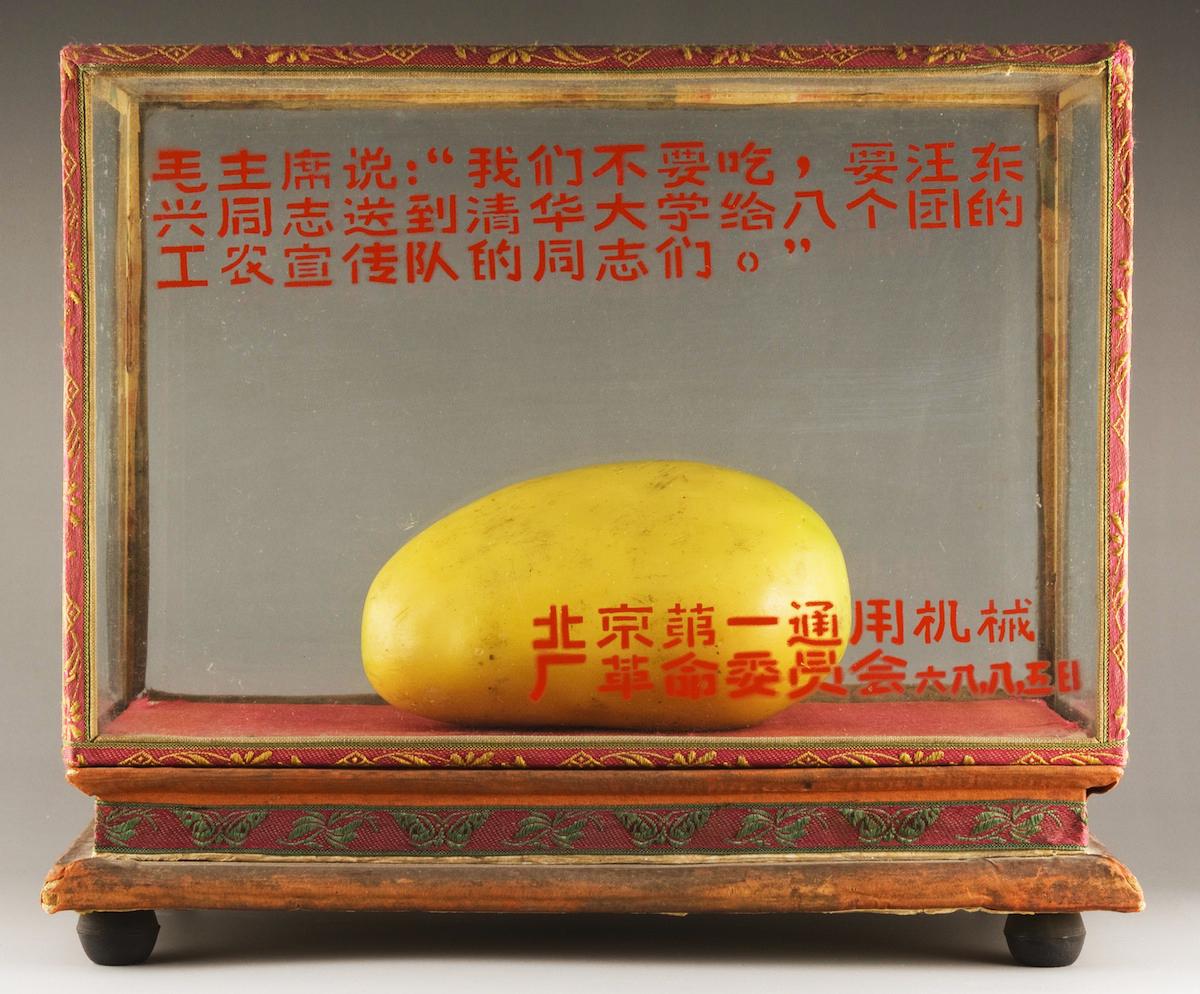The Vault is Slate’s new history blog. Like us on Facebook; follow us on Twitter @slatevault; find us on Tumblr. Find out more about what this space is all about here.
Mangoes don’t have an obvious connection to the Chinese Cultural Revolution; in the 1960s, they weren’t even cultivated in northern China. Yet a new exhibition at Museum Rietberg, in Zurich, features more than sixty colorful objects and images dating to the late 1960s that mix mangoes and Mao Zedong.
Alfreda Murck, the curator of the exhibition, explains to Collectors Weekly’s Ben Marks that the mango’s stardom was born of the complicated politics of China’s Cultural Revolution. Throughout the spring and summer of 1968, competing student groups loyal to Mao engaged in bloody clashes. Mao asked 30,000 Beijing factory workers to act as peacekeepers, and many of these were killed or injured.
In the middle of an uneasy peace, Mao received a crate of mangoes from the Pakistani foreign minister, who was visiting Beijing. Mao regifted the fruit to the factory workers’ peacekeeping squads—who were now calling themselves “The Worker-Peasant Mao Zedong Thought Propaganda Teams”—in thanks for their efforts.
Workers saw the mango as an indication of Mao’s care for the working class. The crate of mangoes was split up and individual fruits were sent to factories. There they were put on altars, sealed in wax, pickled in formaldehyde, and (in at least one factory) boiled in water, of which each worker drank a symbolic spoonful.
Copies of mangoes in wax and plastic were produced so that the symbol could be more widely distributed. Many plastic or wax replicas were enclosed in vitrines to emphasize their status a quasi-sacred object. Mango objects—trays, mugs, fabric—joined the replicas. The state even produced Mango Brand cigarettes.
After Mao’s death in 1976, and especially after the Party issued a critique of his methods in 1981, the mango lost its cultural power, and some Chinese started throwing their wax mangoes in the trash.
Despite the purge, Murck reports that you can still buy mango-based artifacts in Beijing’s flea markets, if you know who to ask.
Collectors Weekly’s website has more Mao-mango images. Thanks to CW’s Lisa Hix for the tip.

Enamel tray with text reading “With each mango, profound kindness.” Image courtesy Alfreda Murck, via Collectors Weekly.

Textile showing mangoes, the Nanjing Bridge (R), and the Great Wall (upper and lower left). Image courtesy Alfreda Murck, via Collectors Weekly.

Text reads, in part: “Chairman Mao said: ‘We do not want to eat them; have comrade Wang Dongxing take them to Qinghua University for the comrades in the eight Worker-Peasant Propaganda Teams.’” Image courtesy Alfreda Murck, via Collectors Weekly.